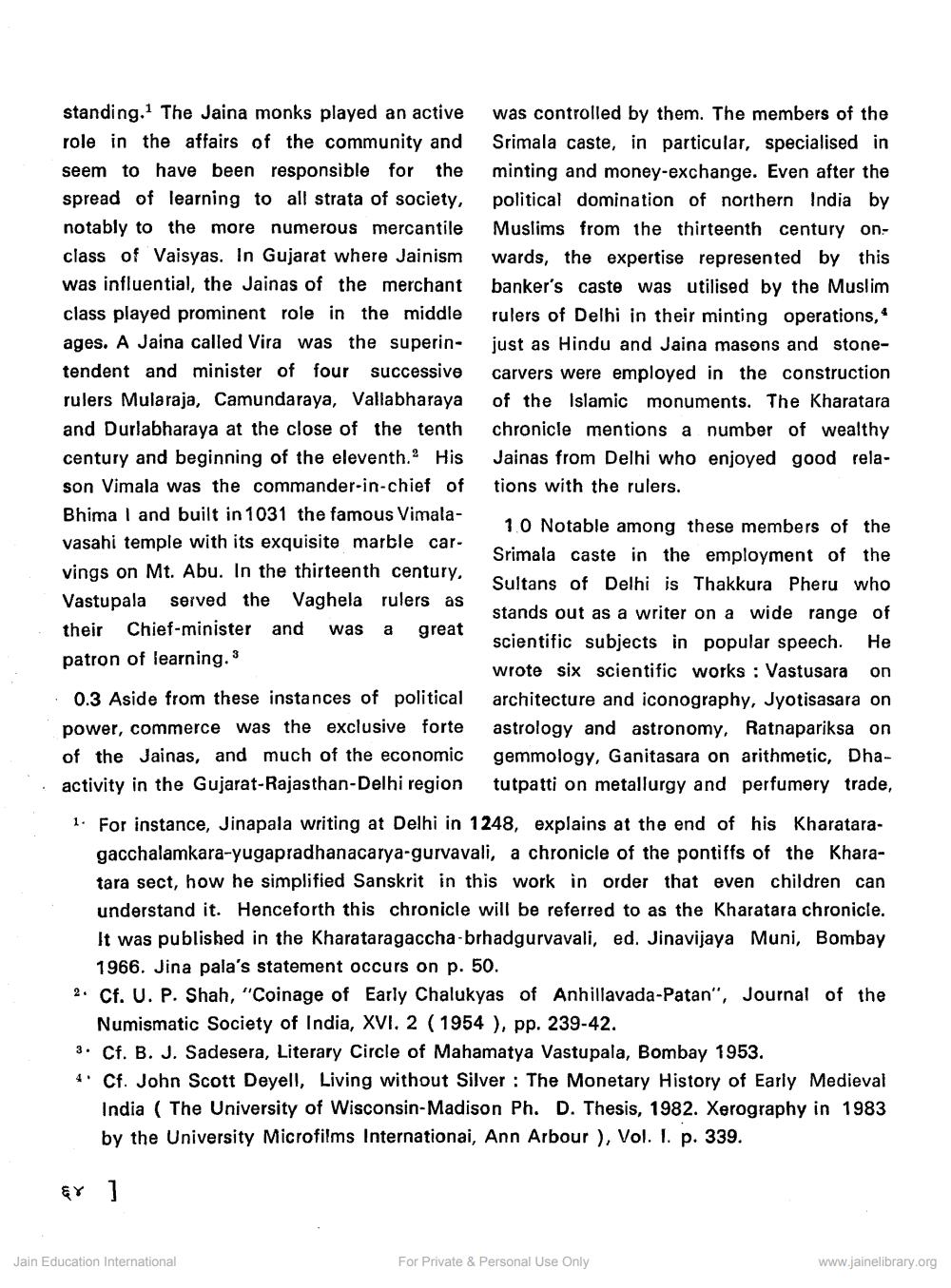Book Title: Thakkura Pheru and Popularisation of Science in India in 14th Century Author(s): Sreeramula Sarma Publisher: Z_Bhanvarlal_Nahta_Abhinandan_Granth_012041.pdf View full book textPage 2
________________ standing. The Jaina monks played an active role in the affairs of the community and seem to have been responsible for the spread of learning to all strata of society, notably to the more numerous mercantile class of Vaisyas. In Gujarat where Jainism was influential, the Jainas of the merchant class played prominent role in the middle ages. A Jaina called Vira was the superin- tendent and minister of four successive rulers Mularaja, Camundaraya, Vallabharaya and Durlabharaya at the close of the tenth century and beginning of the eleventh. His son Vimala was the commander-in-chief of Bhima I and built in 1031 the famous Vimalavasahi temple with its exquisite marble carvings on Mt. Abu. In the thirteenth century. Vastupala served the Vaghela rulers as their Chief-minister and was a great patron of learning. 3 was controlled by them. The members of the Srimala caste, in particular, specialised in minting and money-exchange. Even after the political domination of northern India by Muslims from the thirteenth century onwards, the expertise represented by this banker's caste was utilised by the Muslim rulers of Delhi in their minting operations, just as Hindu and Jaina masons and stonecarvers were employed in the construction of the Islamic monuments. The Kharatara chronicle mentions a number of wealthy Jainas from Delhi who enjoyed good relations with the rulers. 1.0 Notable among these members of the Srimala caste in the employment of the Sultans of Delhi is Thakkura Pheru who stands out as a writer on a wide range of scientific subjects in popular speech. He wrote six scientific works : Vastusara on architecture and iconography, Jyotisasara on astrology and astronomy, Ratnapariksa on gemmology, Ganitasara on arithmetic, Dhatutpatti on metallurgy and perfumery trade, · 0.3 Aside from these instances of political power, commerce was the exclusive forte of the Jainas, and much of the economic activity in the Gujarat-Rajasthan-Delhi region 1. For instance, Jinapala writing at Delhi in 1248, explains at the end of his Kharatara gacchalamkara-yugapradhanacarya-gurvavali, a chronicle of the pontiffs of the Kharatara sect, how he simplified Sanskrit in this work in order that even children can understand it. Henceforth this chronicle will be referred to as the Kharatara chronicle. It was published in the Kharataragaccha-brhadgurvavali, ed. Jinavijaya Muni, Bombay 1966. Jina pala's statement occurs on p. 50. 2. Cf. U. P. Shah, "Coinage of Early Chalukyas of Anhillavada-Patan", Journal of the Numismatic Society of India, XVI. 2 (1954 ), pp. 239-42. 3. Cf. B. J. Sadesera, Literary Circle of Mahamatya Vastupala, Bombay 1953. 4. Cf. John Scott Deyell, Living without Silver : The Monetary History of Early Medieval India ( The University of Wisconsin-Madison Ph. D. Thesis, 1982. Xerography in 1983 by the University Microfilms Internationai, Ann Arbour ), Vol. I. p. 339. &Y ] Jain Education International For Private & Personal Use Only www.jainelibrary.orgPage Navigation
1 2 3 4 5 6 7 8 9 10
